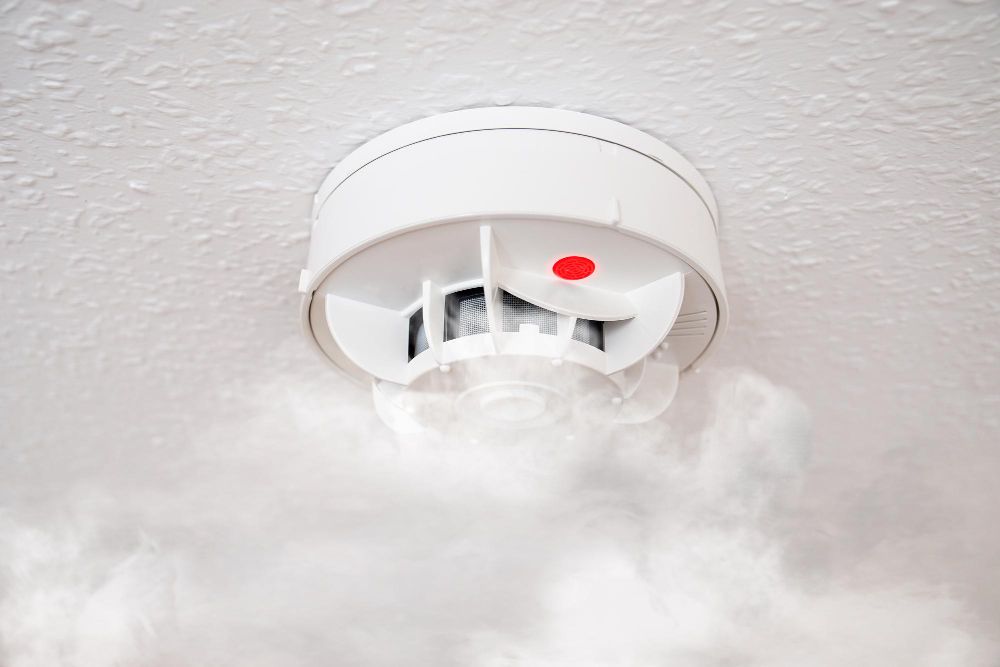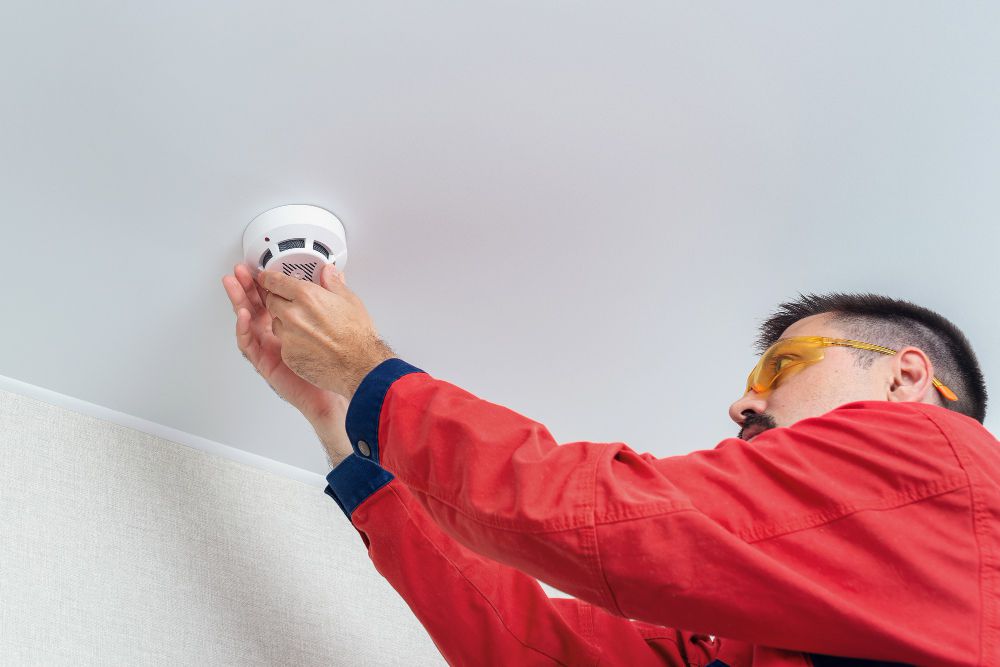Smoke Detector Wiring
Can I install a hardwired smoke detector myself? Well, the short answer is yes. However, it is not recommended to DIY install these detectors unless you have experience doing home electrical work, have the right tools and familiarity with how electrical circuits work. Working with electricity is dangerous and if you don’t have such familiarity then your first project probably shouldn’t be installing hard-wired smoke alarms wiring detectors that are critical to the safety of your home and family.
When you want excellent customer service and expertise from your electrician, make sure that electrician is Juniper Mountain Electric.

Hardwired smoke detectors
According to the Denver Department of Safety, Fire Prevention Division, a 2008 survey revealed that while 96% of households had at least one smoke alarm, non-working smoke alarms were far more common than homes without any alarms at all. Alarmingly, nearly two-thirds of home fire fatalities occurred in residences without a functioning smoke alarm. In most cases, smoke alarms fail due to missing, disconnected, or dead batteries.
Hardwired smoke alarms offer a safer alternative. These alarms are directly connected to your home’s electrical system, relying on battery power only during outages. Additionally, hardwired alarms are interconnected, meaning if one detects smoke or fire, all alarms in the home will sound. This feature provides an early warning, ensuring occupants on upper levels are alerted to fires starting in lower areas. (Source: Denver Fire Department, denvergov.org)
Where should the smoke detectors be located?
According to the Colorado Fire Code, smoke alarms are required to be placed in every residential dwelling, in every bedroom, outside each sleeping area, and on every level of the home including the basement. Beginning January 1, 2019, all newly installed smoke detectors must have a 10-year lithium-ion battery. DENVER FIRE DEPARTMENT (denvergov.org)
Smoke detector placement is actually quite important. Smoke detector location needs to be where it will best detect smoke which means placing them on the ceiling. Since smoke rises and pools on the ceiling, a ceiling smoke detector has the best opportunity to detect the smoke. The best spot on the ceiling is in the center but if that is unavailable due to a ceiling light fixture or fan, the smoke detector installation must be at least 4 inches from any wall. Smoke detectors should never be placed in corners as when smoke rises clear air gets pushed into the corners and the smoke will not reach the detector.
If you want to make sure your new smoke detectors are installed correctly for maximum safety, contact the professional electricians at Juniper Mountain Electric.
Types of smoke detectors
It is not just law; it is common sense to have smoke detectors in your home. Smoke detectors are essential for protecting your home and family. Depending on the size and layout of your home, there may be different types of smoke alarms that may be best for you. For example:
Ionization smoke detectors: Amazingly, more than 90% of home smoke alarms are ionization smoke detectors. Ionization smoke detectors work using radioactive material. Inside the detector is a chamber where that bit of radioactive material is suspended between electrically charged plates. When smoke enters the chamber, it interferes with the field and triggers the alarm.
The benefit of ionization smoke alarms is that they are excellent at detecting flaming fires. Since this is the most common type of home fire it makes sense that ionization smoke alarms are the most common type of smoke detector. But does that mean they should be the only type of smoke detector in your home? According to the National Fire Protection Association, homes should have both ionization and photoelectric smoke detectors. Installing and maintaining smoke alarms – NFPA
Photoelectric smoke detectors: So why do you also need a photoelectric smoke alarm? Photoelectric smoke detectors are better than ionization smoke detectors at detecting smoky fires such as those from electrical fires that start in a wall, or from fires caused by cigarettes or charcoal. Photoelectric smoke detectors have a chamber just like ionization smoke detectors, but instead of radioactive material they use a light-sensitive sensor and an LED light. The LED light sends a steady beam to the sensor at all times. If smoke gets into the chamber, it breaks the beam which sets off the alarm.
Bedroom-specific alarms: Bedroom specific alarms can be particularly useful as they often have a voice alarm and not just a sound alarm. They are also louder than traditional smoke alarms. Finally, they come with a ten year lithium ion battery so you don’t have to worry about chirping noises when a battery fails.
Kitchen-specific alarms: There are also kitchen specific alarms. The most common place for a house fire to start is the kitchen. “Home Cooking Fires” report | NFPA Kitchen fires are often more hazardous as they also produce smoke that contains toxic gases like carbon monoxide. For this reason it can be helpful for the smoke detector that is located near your kitchen to also have a carbon monoxide detector. That way if the fire is producing carbon monoxide, the warm air will push the carbon monoxide into the detector, potentially before the smoke can reach the same height. This will set off the alarm sooner than just a regular smoke detector and the faster you are warned of a fire the more time you will have to get yourself and your family to safety!
How do smoke detectors talk to each other?
So, your smoke detectors have been wired in per the electrical codes and a fire starts. Suddenly all the smoke detectors in the house are going off. Why? Wired smoke detectors have three wires, a black wire a white wire and a red wire. For interconnected smoke alarms, the important wire is the red wire. Interconnected smoke detectors all operate off the same dedicated circuit from the electrical panel and connect through the red wire. If there is smoke in the house the nearest smoke detector will send a signal through the red wire which carries the signal to all of the other smoke detectors. Typically, up to 12 units can intercommunicate on the same red wire.
You can also have battery operated smoke detectors that are interconnected. The difference is that the battery powered smoke detectors will use a radio signal to speak to each other. It is possible to mix wired and wireless smoke detectors, but it is helpful to have an electrician inspect your existing systems to makes sure all of the smoke detectors will speak to each other.

Why are interconnected smoke detectors better?
According to an NFPA article in February 2021:
So don’t wait! Contact Juniper Mountain Electric to get wired smoke detectors today!

